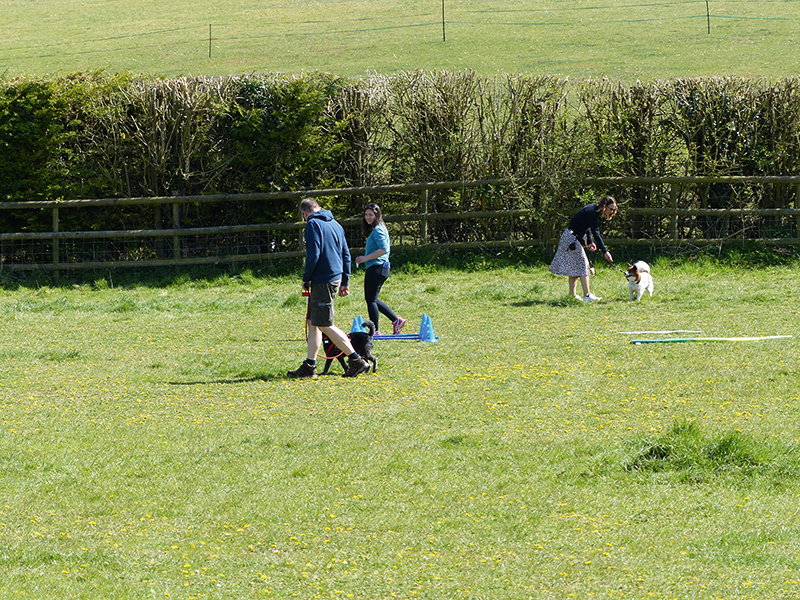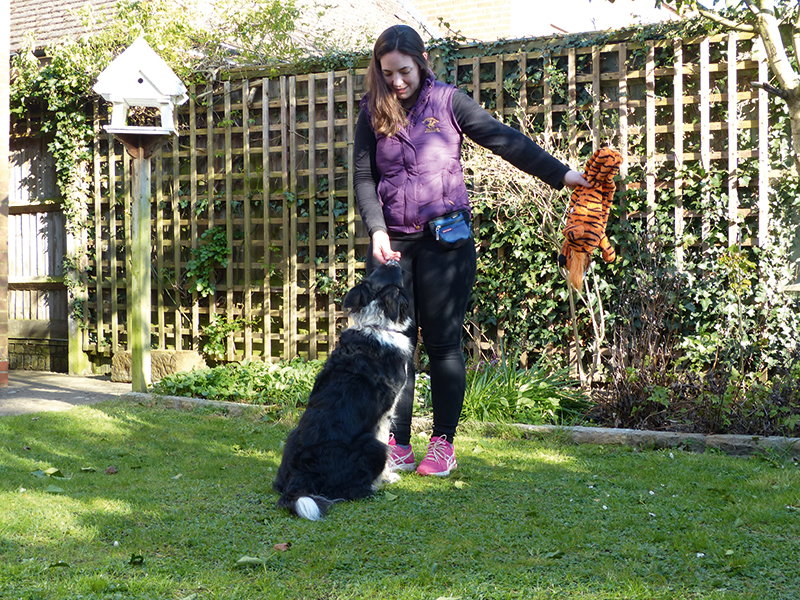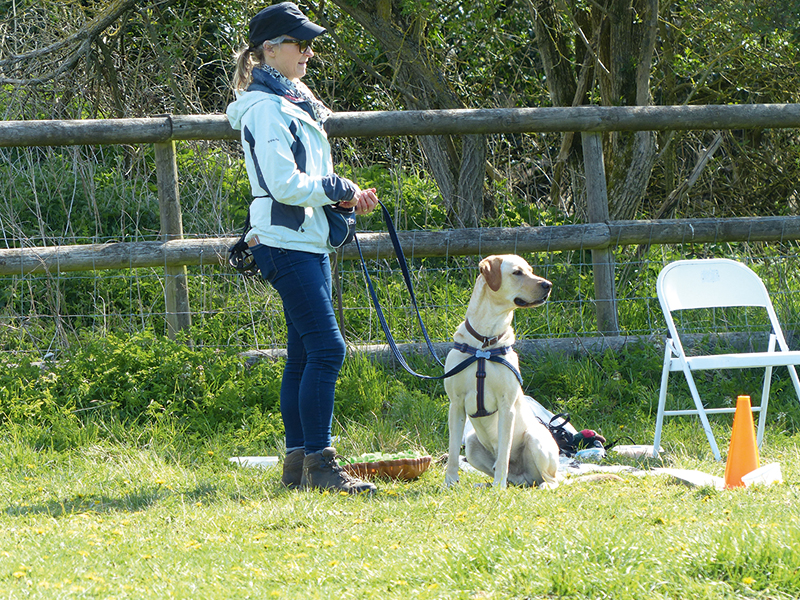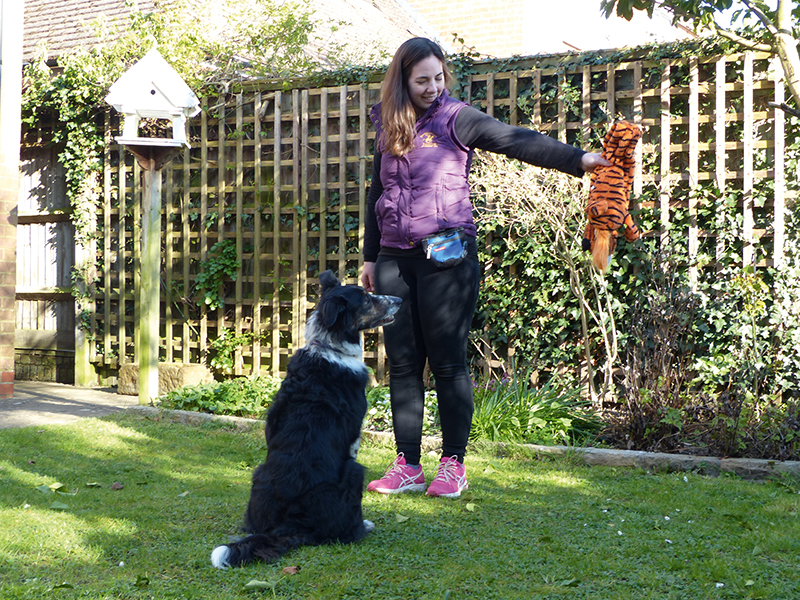Reducing your reactive dog’s stress levels and helping him to relax can change those negative feelings, advise behaviourists Toni Shelbourne and Claire Lush.
Last month we looked at what might cause your dog to react to people and animals, and advised on how to manage your expectations. This month we’re focusing on tools that can promote relaxation, and help to change the emotion behind your dog’s response.
Much can be done to reduce your dog’s stress levels, which in turn can aid his learning process. This includes recognising what might increase his reactive behaviour and finding ways to calm those negative feelings
Trigger stacking
Trigger is a term used to describe something in the environment that increases a dog’s awareness, causing a negative emotional response, and resulting in a behavioural reaction. Trigger stacking is the build-up of triggers that a dog becomes exposed to over a period. Once a dog has come across more triggers than he is able to cope with, you will see behaviour such as reactivity.
So, how can you help to reduce this? Try introducing the following:
● Space from triggers in your dog’s daily routine.
● Time away from triggers to help reduce your dog’s stress levels.
● Reduce the number of triggers your dog comes across each day.
You can also work at reducing stress levels at home. Allowing your dog to bark at passers-by, fence-running with the dog next door, being fearful of household noises, or disliking his harness going on, will all add to what your dog can and cannot handle on his daily walks.
Tools for relaxation
All these will help to calm the emotions.

Tellington TTouch body work can be effective, combined with settle training and watching the world go by.
● Tellington TTouch: This remarkable training method can really help animals to change their emotional responses. Posture and behaviour are intrinsically linked so by changing the posture, you can change the behaviour. A dog who has suffered a traumatic experience will hold tension in the body that ‘tells’ him how to react in a similar situation. A friendly dog running up to him sparks the memory of the previous attack, so the dog will automatically go on the defensive as a protective action. He doesn’t feel safe, and he will react instinctively. Ask the body to relax and the mental and emotional state will follow, allowing the dog to think and act, not react; he is then able to change his response. To learn more and to find a practitioner to help you, visit www.ttouchtraining.co.uk
● Settle training: Being able to settle around distractions is a great tool in helping to increase your dog’s ability to calm himself.

Learning to settle takes practice. Teach it first at home, then take it into new environments.
1. Sit down and relax with a towel or a mat next to you on the floor and treats close to hand.
2. Try to use calm, slow movements and practise deep breathing while teaching this exercise to encourage your dog to relax.
3. As soon as your dog walks on to the towel, reward him with a treat.
4. Repeat this until your dog automatically steps onto the towel; then change your criteria so that you reward your dog for sitting on the towel.
5. Repeat until you feel that your dog is relaxed enough that he may lie down on the towel.
6. Once your dog is lying down on the towel, start to increase the period between rewards to build up the length of time your dog maintains position.
7. Add in distractions, like moving your legs or your arms, and reward your dog for maintaining his position on the towel. Build up to being able to move around the room while your dog stays on the towel in a relaxed position.
8. Once your dog can do this at home, practise on walks. Go somewhere you can be undisturbed and settle him at your feet to watch the world go by. You may have to go back to the early stages of training the settle, as your dog won’t initially feel relaxed in an outdoor environment.
● Days off: For reactive dogs, walks tend to mean encountering scary things and these set off your dog’s fight or flight response. When each walk results in the production of cortisol and other stress hormones, long-term exposure to high levels of these hormones can increase the risk of health problems. Like us, dogs need to rest and relax, giving their body time to recover from stressful events. Mental stimulation through training and enrichment can be a great help in keeping your dog occupied on days off if he struggles to settle.

Days off are important for nervous dogs. Enrichment toys and scent work can be a calming and tiring activity done at home.
Try the following:
● Snuffle mats.
● Puzzle toys.
● Scent work.
● TTouch body work and the confidence course.
● Real dog yoga (www.therealdogyoga.co.uk).
● Secure fields: Hiring private dog-walking fields has become popular. They can be a relaxed, enjoyable alternative, providing your dog with safe off-lead exercise and playtime away from the stresses of everyday walks. You can search for a secure field near you at www.dogwalkingfields.com

Many dogs need space, so make sure you find the right distance between you and whatever upsets them, as illustrated in this controlled exercise in a reactive to responsive class.
● Counter-conditioning: Counter-conditioning is usually paired with desensitisation, which means exposing your dog to other dogs/people/environments/objects — termed as triggers — in a safe manner that he can cope with.
Counter-conditioning helps change the underlying emotion behind the behaviour. A dog can learn to go from being fearful of a trigger to an excited anticipation at the sight of one. This is achieved through pairing the trigger with something the fearful dog loves and sees as extremely rewarding. In most cases this will be yummy treats — food being scientifically proven to be the highest form of reward for canines — or a toy (next most effective reward), or praise (least effective reward).
The order of which comes first, the sight of the trigger or the food, is important. The trigger must be seen by the dog first, before you present the food, not before he sees the dog (which is distraction with no change of the behaviour).
Classical counter-conditioning is effective but it can take a long time, so here is a tip for you; if you add in a training twist it can speed up the behaviour change and allows you and your dog to have a conservation about the ‘scary’ trigger; you can warn your dog that another dog or trigger is in sight, and he can warn you. See the ‘Where’s the dog?’ game (right).
‘Where’s the dog?’ game
Developed by US trainer Leslie McDevitt this simple training game can make a huge difference.
1. Teach your dog to look at something and mark that behaviour with a clicker or marker word like ‘Yes’. You can use
a toy; bringing it out from behind your back, or send a helper to the bottom of the garden to jump around. Make sure of the sequence — wave toy/helper jumps around, dog looks, you mark, and then feed, asking him to look back at you when you give the treat. Then repeat.
2. Once he can do this, try it on walks with triggers in the distance. The space your dog needs will vary with each individual so start where he can be successful.
3. Proof the exercise in different places and decrease the distance when you are confident your dog can cope. This could take weeks or even months; it won’t happen overnight.
4. Teach your dog a phrase or word that means a trigger is in sight. ‘Where’s the dog?’ works well or just ‘Dog’. At first say this as your dog is turning to look. After a while test if he knows what it means yet; if you ask, ‘Where’s the dog?’ does he turn and look for one? Remember to mark and feed each and every time.
5. Watch for your dog telling you a trigger is in view. If he looks at you intently, look around for a trigger, and again mark and feed if he spotted the trigger first. You are now having a conservation.
6. You can also play this game when you are practising settle in the real world with triggers that are under control and at a distance.
Labrador Ronnie practising the ‘Where’s the dog?’ game in a reactive to responsive class.

How to do it.
STEP 1
Teach the ‘Where’s the dog?’ game at home with a toy first. Here Kizzy is learning to look at a toy and be rewarded for it.

STEP 2
As it is fed, the reward helps her to look away from the trigger, with her focus back on Claire.
Finding the right help
Finding suitable classes for reactive dogs can be difficult; working with groups of reactive dogs is challenging and can be detrimental to the dogs’ learning and emotional states if not managed correctly.
Classes for reactive dogs should have:
● Limited numbers.
● Ideally be outside in a large, private field.
● Have at least two instructors running the class.
● Have controls in place for entering and exiting the class.
● The content taught should cover both the practicalities of managing a reactive dog on a walk and helping the dogs’ and owners’ emotional states.









